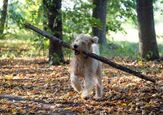How Can Food Puzzles Boost Your Cat's Overall Well-being?

Cats are hardwired hunters, problem-solvers, and explorers. While we diligently fill their bowls with the best foods and most nutritious meals, we might be overlooking a crucial aspect of their well-being: those natural instincts. But what if I told you there’s a simple, effective, and enjoyable way to transform mealtime into an enriching activity? This is where food puzzles and interactive treat toys come in.
These products are more than just toys; they’re incredible tools for boosting your cat’s physical health, sharpening their minds, and preventing many common behavioral issues. In this post, I’m going to dive deep into why food puzzles are so beneficial for your cat’s overall health and happiness, share the wide range of options available (including our go-to favorites with my 3 cats), and show you exactly how you can incorporate them into your cat’s routine, regardless of your budget.
Why Traditional Food Bowls Fall Short
It’s easy to forget that, despite our cats making themselves so comfortable and cozy in our home, they are still wired with the instincts of their wild ancestors. In the wild, a cat’s day revolves around the hunt. They spend much of their time stalking prey, planning their approach, pouncing, and ultimately, problem-solving to catch their next meal. This entire process, from the mental challenge of finding food to the physical exercise of catching it, is incredibly stimulating. It’s about far more than just filling their stomachs.
However, when we feed our cats in a traditional bowl, we inadvertently strip away this fundamental aspect of their natural behavior. The food is readily available, requiring no effort, thought, or physical activity. While this is convenient for us, it can lead to many issues for our cats. Without the challenge of the hunt, many cats will become bored, leading to an excess of pent-up energy that can manifest in destructive behaviors, excessive vocalization, or even aggression.
In addition to the loss of mental enrichment, feeding your cat from a traditional bowl can lead to overeating, digestive issues, and ultimately, weight gain. Food puzzles and interactive feeding toys allow you to reintroduce the challenge and engagement that traditional bowls lack. This means we are now fulfilling their need to “work” for their food.
The Physical Health Benefits of Food Puzzles for Your Cat
Beyond just making mealtime more engaging, food puzzles offer many benefits that can actually impact your cat’s physical health and well-being. This is particularly true when discussing weight management and how to optimize their digestion. Here are a few benefits you can enjoy by incorporating puzzles into your cat’s daily routine:
Weight Management
One of the most significant advantages of using food puzzles is their contribution to helping your cat maintain a healthy weight. Many indoor cats struggle with their weight due to a sedentary lifestyle and easy access to food.
When their food is served in a traditional bowl, it is readily available with no work (hunting) required, and they can often “power eat,” gobbling up the entire portion in just a few minutes. This can lead to overconsumption because their brain doesn’t register that they are full until well after they’ve finished eating, causing them to consume more calories than they need. When they are eating from a food puzzle, it forces them to eat at a slower pace. Your cat must work to get to each morsel, stretching out their mealtime and allowing their brain to catch up with their physical satiety.
Additionally, interacting with the puzzle, batting it around, pushing levers, or navigating mazes helps to encourage physical activity. Even small movements through the day add up, burning calories and helping to prevent obesity, a growing problem in the US that is a precursor to serious health issues like diabetes, joint problems, and heart disease. By making them work for their food, you're helping your cat stay active and maintain a healthier body weight.
Improved Digestion and Minor Dental Benefits
Weight management isn’t the only physical benefit. Food puzzles can also significantly aid in improving your cat’s digestion. Cats who eat too quickly from a bowl are prone to digestive problems, like regurgitation or vomiting. This happens because they swallow too much air along with their food, or their digestive system can’t handle the sudden high-level intake of food. By slowing your cat’s eating pace, the food puzzles help to reduce the amount of air ingested and allow the stomach to process food more gradually without becoming overwhelmed.
Another often overlooked benefit is that a slower eating speed promotes more thorough chewing. Have you ever watched a cat gulp down their food? It’s surprising that they don’t choke on the pieces of kibble they are swallowing without blinking an eye! Not only does slowing them down and encouraging them to chew their food more help to prevent choking, but it can also lead to better nutrient absorption from their food.
While your cat’s new food puzzle isn’t going to clean their teeth as effectively as a dedicated dental cleaning routine (like brushing their teeth), some food puzzle designs, particularly those with textured surfaces or nooks and crannies, may offer a minor benefit as part of your greater dental care plan. As your cat licks and bites at the puzzle to access their food, it can lead to gentle scraping of the teeth, helping to scrape away plaque. While this shouldn’t be relied on as a dental cleaning solution, it is an added bonus.
Mental Health & Behavioral Benefits
Of course, as I mentioned already, the impact of introducing food puzzles to your cat extends far beyond just physical health. They are powerful tools for boosting your cat’s mental well-being and addressing many common behavioral challenges by getting to the root of the problem. After all, cats are intelligent creators who thrive on mental engagement!
Preventing Boredom
Without much-needed mental stimulation, boredom can quickly set in, leading to unwanted and undesirable behaviors. Food puzzles are a great way to provide your cat with mental enrichment by challenging them to tap into their natural problem-solving skill, keeping their brains active and engaged. It transforms passive eating into an active mental exercise, requiring them to think and strategize to get that coveted reward – their meal.
By providing your cat with mental enrichment, you can avoid the many problems that often arise from boredom. This includes destructive behaviors like excessive scratching of furniture, inappropriate urination, or persistent vocalization. It’s a great way to provide a constructive outlet for their natural drives, channeling their energy into a positive activity (and not into tearing up your couch).
Reducing Stress and Anxiety
A food puzzle can also significantly help reduce stress and anxiety in our cats. Just like humans, cats can experience stress throughout their daily routine. This could result from changes in their environment, loud noises (like fireworks or thunder), or even anxiety associated with a trip to the vet. By feeding your pet with a food puzzle, you’re offering a positive distraction, drawing their focus away from the source of their stress and providing a calming, self-soothing activity. The focused attention required to solve a puzzle can have a meditative effect, helping to alleviate feelings of unease.
Building Confidence
Confidence can go a long way in making your cat feel safe, secure, and happy in their regular environment. But how do you build that confidence if your cat is lacking?
One great way to build their confidence is by providing them with a puzzle they must navigate (but ensuring it isn’t too challenging). Each time they figure out how to successfully retrieve a treat or piece of kibble from the puzzle, they experience a sense of accomplishment. This feeling of mastery can benefit shy or anxious cats, as it allows them to control a part of their environment and successfully achieve a goal, reinforcing a positive and strong self-perception.
Strengthening the Human-Animal Bond
This is a point that very few cat parents consider when deciding how to feed their cat. There is a potential connection between mealtime and your human-animal bond. Watching your cat intently work on a puzzle, watching their problem-solving skills in action, encouraging and praising them when they are successful – it can all be entertaining and provide a new way to appreciate their instincts. It becomes a shared experience, a moment of connection, as you give them a fun, stimulating, and fulfilling activity.
Types of Food Puzzles and Interactive Toys
Now that I’ve convinced you of the many incredible benefits food puzzles offer, the next step is exploring the many available options. This includes different styles, sizes, and difficulties. There’s truly something for every cat’s personality and skill level, ensuring you can find the perfect fit for your best friend.
Beginner-Friendly Options
If your cat is new to food puzzles, it’s best to start with something simple and straightforward to build their confidence and prevent frustration. Pushing them to use something too complex and challenging early on may have the exact opposite impact you were hoping for.
- Treat Dispensing Balls: These are a great entry point. Fill the hollow ball with a few pieces of kibble or treats, and your cat learn to roll it around to make the food fall out. It’s a simple concept that provides immediate gratification while encouraging movement. Example: PetSafe Slimcat Slow Feeder Ball for Cats
- Slow Feeder Bowls: While these are not traditional puzzles, these bowls have raised ridges or obstacles that force your cat to eat more slowly as they work through getting the food out. They are a great option if your cat is a super-fast eater, helping them get used to working a little for their mail before moving on to more complex puzzles. They are also compatible with wet food, which isn’t true of many options we’ll touch on. Example: Bifeaw Silicone Slow Feeder Cat Bowl
- Simple Cubes or Containers with Holes: These are basic designs where your cat needs to bat or nudge the object to release food through pre-cut holes. They offer minimal challenge, making them an excellent choice for introducing the concept of interactive feeding. Example: Catit PIXI Treat Dispenser
Moderate Challenge Puzzles
Once your cat has mastered the basics, you can take them to the next level and introduce puzzles requiring more thought and dexterity.
- Tray Puzzles with Lids or Sliders: These puzzles often feature a flat base with various compartments covered by sliding lids or obstacles. Your cat has to learn to move the covers aside with their paws or nose to access the hidden food. Example: Catstages Kitty Cube Interactive Treat Puzzle Cat Toy
- Tower or Feeder Mazes: These designs usually involve multiple layers or a maze-like structure that food drops through as they engage with it. Your cat must manipulate the treat or kibble down the levels, often using their paws to push it along the pathway until it reaches an accessible opening at the bottom. Example: Catit Senses 2.0 Food Tree
- Mousers or Hunting Toys: Designed to tap into a cat’s natural hunting instincts, these interactive toys typically resemble prey and feature a spot where food or treats can be stashed. You hide them around the room (or multiple rooms), requiring your cat to hunt down and “catch” their meal. Example: SPOT Doc and Phoebe’s Cat Hunting Snacker
Advanced & Complex Puzzles
For the kitty Einsteins in your life, there are puzzles that will level up the challenge in a way that demands sequential actions, multiple steps, or more intricate problem-solving. These aren’t the right fit for all cats and definitely shouldn’t be used when getting started. However, for cats who have mastered the moderate challenge puzzles, here are some ways you can continue to challenge their minds.
- Multi-Chamber Puzzles: These require your cat to perform a series of actions, such as pushing a lever and then sliding a door, to access different compartments. They offer a bigger challenge and a great mental workout. Example: Outward Hound by Nina Ottosson Tower of Treats
- Electronic/Automated Puzzles: Some advanced options include electronic puzzles that need to be triggered using more sophisticated interactions. They may also create distance between pieces of the puzzle, incorporating more movement into the equation. Example: PETGEEK Automatic Treat Dispenser with Button
- DIY Advanced Puzzles: Don’t feel limited to store-bought options! You can get incredibly creative with household items, crafting more complex puzzles from empty toilet paper rolls, egg cartons, or even plastic bottles. I’ll share some budget-friendly DIY ideas in the next section.
Important Cleaning Considerations
You should always prioritize safety and hygiene, no matter which type of puzzle you choose. Opt for puzzles made from food-grade plastic, ceramic, or silicone, ensuring they are non-toxic, durable, and capable of being properly cleaned and sanitized. Food can get stuck in crevices, and moisture can lead to bacterial growth, so choose puzzles that can be easily disassembled and washed thoroughly to prevent contamination and keep your cat healthy.
DIY Puzzles from Household Items
You might be surprised to learn you don’t need to spend a lot of money to introduce the benefits of food puzzles to your cat. In fact, many effective and stimulating puzzles can be made right at home using everyday household items for free!
- Toilet Paper/Paper Towel Rolls: Fold in one end of the cardboard tube, drop in a few pieces of kibble or treats, then fold in the other end. You can also cut small holes in the sides for your cat to sniff and work the food out.
- Egg Cartons: A simple egg carton can become an instant puzzle. Place a few pieces of kibble in some of the cups and close it up. Alternatively, you can loosely cover some cups with crumpled paper or small, light toy balls your cat can bat away.
- Plastic Bottles: Clean, empty plastic water bottles can be transformed into food puzzles by cutting several small holes (just large enough for kibble to fall out) around the sides. Fill the bottle with food, and your cat will have to roll and bat it to get the treats out.
- Muffin Tins: A standard muffin tin with multiple cups is perfect for a simple “seek and find” puzzle. Place a few pieces of food in each cup and then cover some or all with small toy balls, crumpled paper, or even bottle caps.
- Cardboard Boxes: Don’t throw away those empty tissue boxes or small shipping boxes. You can cut various-sized holes in them, create simple partitions inside, or even just scatter food loosely inside for your cat to rummage through. This is a favorite in our house.
Challenge Your Cat to a Fun Food Puzzle Today
Food puzzles and interactive treat toys are invaluable tools for enriching your cat’s life. Not only do they offer great benefits, but they are also highly accessible and even budget-friendly, making them an option for all cat parents to explore! Start simple, pay attention to your cat’s response, and watch as they become more engaged, confident, and content. Your cat will thank you for it.
Join the PetGuide community. Get the latest pet news and product recommendations by subscribing to our newsletter here.

Britt Kascjak is a proud pet mom, sharing her heart (and her home) with her “pack” which includes her husband John, their 2 dogs – Lucifer and Willow – and their 3 cats – Pippen, Jinx, and Theia. She has been active in the animal rescue community for over 15 years, volunteering, fostering and advocating for organizations across Canada and the US. In her free time, she enjoys traveling around the country camping, hiking, and canoeing with her pets.
More by Britt
























